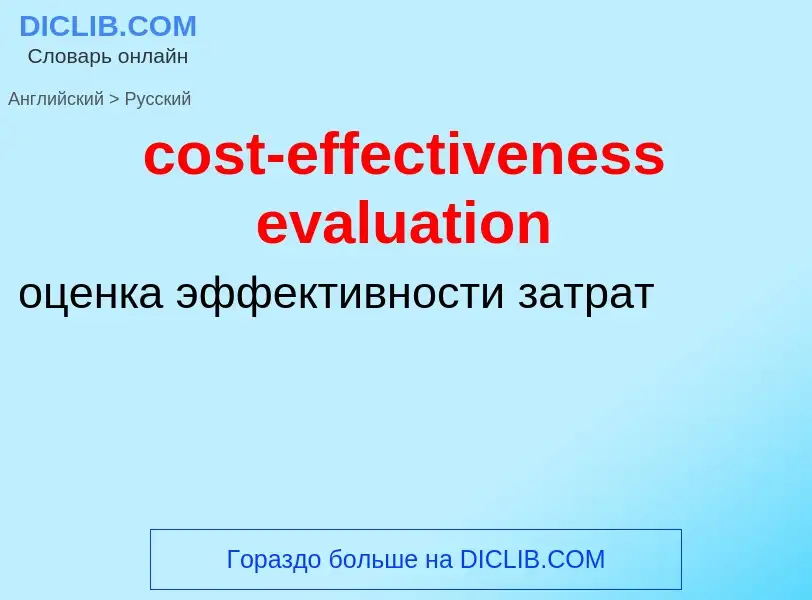Перевод и анализ слов искусственным интеллектом ChatGPT
На этой странице Вы можете получить подробный анализ слова или словосочетания, произведенный с помощью лучшей на сегодняшний день технологии искусственного интеллекта:
- как употребляется слово
- частота употребления
- используется оно чаще в устной или письменной речи
- варианты перевода слова
- примеры употребления (несколько фраз с переводом)
- этимология
cost-effectiveness evaluation - перевод на русский
[kɔsti'fektiv]
строительное дело
рентабельный, экономичный
прилагательное
общая лексика
рентабельный
оправдывающий затраты
экономика
эффективность затрат
[kɔsti'fektivnis]
бухгалтерский учет
затраты-эффективность (экономический показатель соотношения затрат и эфективности, применяемый в методике оценки конкретных инвестиционных проектов)
строительное дело
экономическая эффективность, рентабельность
существительное
общая лексика
рентабельность
Определение
Википедия
Cost-effectiveness analysis (CEA) is a form of economic analysis that compares the relative costs and outcomes (effects) of different courses of action. Cost-effectiveness analysis is distinct from cost–benefit analysis, which assigns a monetary value to the measure of effect. Cost-effectiveness analysis is often used in the field of health services, where it may be inappropriate to monetize health effect. Typically the CEA is expressed in terms of a ratio where the denominator is a gain in health from a measure (years of life, premature births averted, sight-years gained) and the numerator is the cost associated with the health gain. The most commonly used outcome measure is quality-adjusted life years (QALY).
Cost–utility analysis is similar to cost-effectiveness analysis. Cost-effectiveness analyses are often visualized on a plane consisting of four quadrants, the cost represented on one axis and the effectiveness on the other axis. Cost-effectiveness analysis focuses on maximising the average level of an outcome, distributional cost-effectiveness analysis extends the core methods of CEA to incorporate concerns for the distribution of outcomes as well as their average level and make trade-offs between equity and efficiency, these more sophisticated methods are of particular interest when analysing interventions to tackle health inequality.

